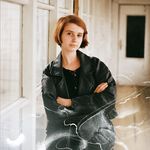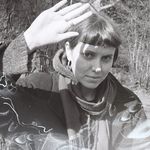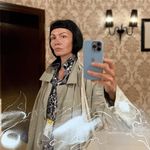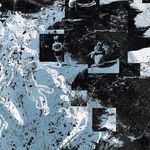Ukrainian ecologies

16 June 2024 — 30 September 2024
IZOLYATSIA and the Ukrainian Environmental Humanities Network are launching the Ukrainian Ecologies project, a residency programme for Ukrainian artists dedicated to the study of Ukraine's environment. The project is funded by the New Democracy Fund and implemented in partnership with Solomiya Magazine.
The root of the word ecology comes from the Greek word oikos (meaning home or environment). During the Russian Federation's war against Ukraine, we have seen numerous forms of violence: the destruction of lives, natural worlds, and their interconnections. Diverse environments, their multispecies relationships, and languages of expression are in danger.
The full-scale invasion has made clear the interconnections between war, colonialism, extraction, and the environment, making it an apt time to rethink Ukrainian ecologies. Focusing on interdisciplinary collaboration between art, humanities, and science, we aim to support the creation of projects that preserve or reveal the impact of the war on the Ukrainian environment.
What are they, Ukrainian ecologies? How can we protect them? What does it mean to engage in environmental practice during the war? What practices do those who work with environmental challenges through the humanities and the arts turn to? How can we challenge anthropocentric perspectives on war?
About the residency
The residency invites Ukrainian artists who research environmental topics and want to implement a project in collaboration with experts involved in environmental research (researchers, ecologists, scientists, activists, etc.). Residents can choose experts to collaborate with on the project topic. They will receive a stipend of €1200 (including materials), curatorial support, logistical costs of up to €300, and assistance in project implementation.
The format of the two-week collaboration will be determined by the artists and experts with the support of the organisers. This may include joint fieldwork and/or consultations. The logistical costs covered by the residency include accommodation, transport and per diem during the fieldwork. After completing the fieldwork, the participants will have one month to complete the project.
The residency results will be presented at a public presentation in Kyiv. Depending on the format and medium, projects can be published by the project's media partner, Solomiya Magazine, in our special environmental issue, or presented at public events organised after the residency.
Projects
The projects created during the residency reflect diverse artistic approaches to addressing urgent environmental issues in Ukraine.
Lords of Waterlilies
Yana Kononova
(fine art print, paper)
The Ros River basin is the most heavily regulated among Ukraine’s waterways. With over 60 dams, reservoirs, and ponds, a network restricts its natural flow. Today, the river faces a prolonged ecological crisis, driven by reduced water levels, pollution, and climate change. Lords of the Water Lilies explores the Ros Valley as a milieu for technical imagination. Along sections of the river that cut through ancient crystalline formations, landscape structures act as “attachment points” for modernization projects — parks, dams, and power stations. The artist employs a method of “re-imagining” to cultivate new sensibilities, allowing us to re-appropriate modern technology that homogenizes the environment. By speculatively engaging with the landscape’s perception, she demonstrates how the question of technology can be reopened through an affirmation of non-modern cultures, thus enabling multiple sensibilities and techniques. In collaboration with environmental geographer Dr. Jonathan Turnbull, the project also examines the potential of the concept of “weird” in studying the Ros. This approach allows us to embrace the impacts of the Anthropocene and navigate contexts where different forms of agency and temporality collide in unexpected and unsettling ways.
Kazka
Karina Synytsia
(acrylic, paper)
In this work Karina draws parallels between the work of Ukrainian entomologist Lev Shelyuzhko during World War II and the destruction of the National Plant Genetic Resources Center in Kharkiv in 2022, during the Russian invasion. She blends reality with fiction using a semi-fantastical style to explore themes of memory, loss, and the interconnectedness of nature and human history. In Kazka, museum artefacts gain sensitivity and become observers of political upheaval. Butterflies from Shelyuzhko’s collection and plants from the Kharkiv Genetic Bank tell their stories of traveling through war-ravaged landscapes. They become unintended guardians of cultural and scientific memory, persisting despite the destruction around them. This work was created following Karina’s expedition to the Institute of Plant Breeding in Kharkiv, where she explored the aftermath of the destruction of the Plant Genetic Resources Center to better understand the importance of preserving such collections in the context of war.
Water Body
(acrylic, photo wallpaper)
Water Body continues the painting series Welcome to Paradise, which explores the contrast between media images of an idealised paradise and the reality of war and destruction. The project uses photo wallpapers, popular in post-Soviet interiors of the 2000s, to visually express this dissonance. Painting elements of destruction and hopelessness over the wallpaper, Karina shows how bright, utopian images transform under the influence of war. The destruction of idyllic scenes becomes a metaphor for the loss and pain encountered in everyday life. In her work, Karina focuses on the water bodies that suffer serious negative environmental consequences due to war. They become part of the narrative of the photo wallpaper, highlighting the connection between human and otherthan-human war losses.
Eyelashes and Sand Crystals
Daryna Mamaisur
(video, mixed media)
The Herbarium of Kherson State University is one of the largest collections of lichens, vascular, and bryophyte plants from southern Ukraine and Crimea. This collection, formed by scientists over a century, is now preserved at the Precarpathian National University in Ivano-Frankivsk. It was evacuated there by the team of the Kherson University after the deoccupation of the city, to protect it from destruction due to ongoing shelling. The project Eyelashes and Sand Crystals focuses on the unique case of the herbarium in exile and the work of scholars who continue collecting samples despite lacking a place to store them. It is an experiment to visually translate the role of Kherson’s collection in the distorted temporality of war: where the present competes with the past, and where memory itself is threatened. The landscape here is fragmented and inaccessible due to occupation, the passage of time, and the loss of biodiversity, remaining unseen to the naked eye. Yet, the catalogued description of the landscape does not compete with the poetics of language, leaving space for imagination. The installation hints at the botanist’s workspace, merging scientific findings with the reflections of artistic research. imagination. The installation hints at the botanist’s workspace, merging scientific findings with the reflections of artistic research.
The Ukrainian Environmental Humanities Network (UEHN) was founded in 2022 by Dmytro Chepurnyi, Karolina Uskakovych, Jonathon Turnbull, Oleksandra Pohrebniak, and Eva Sulek. The network brings together scientists, researchers, artists, curators, designers, academics and activists interested in the environment and ecology of Ukraine.



